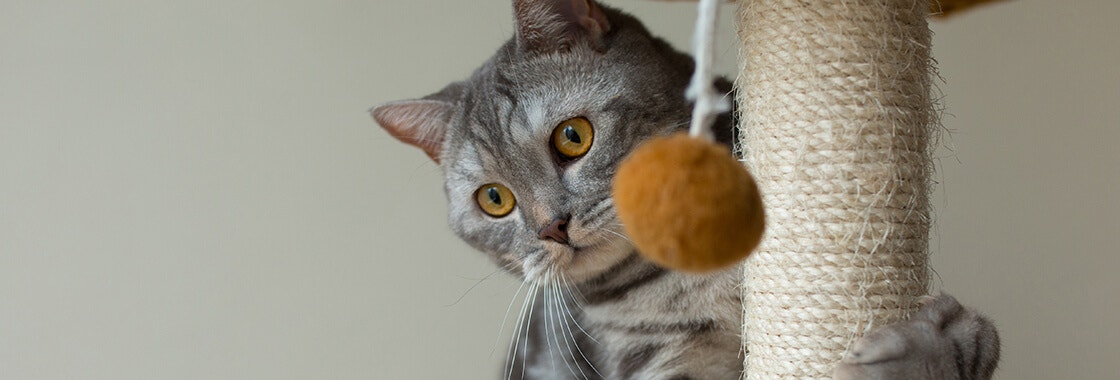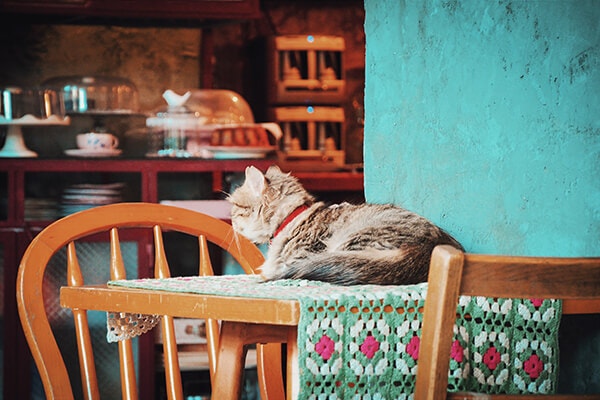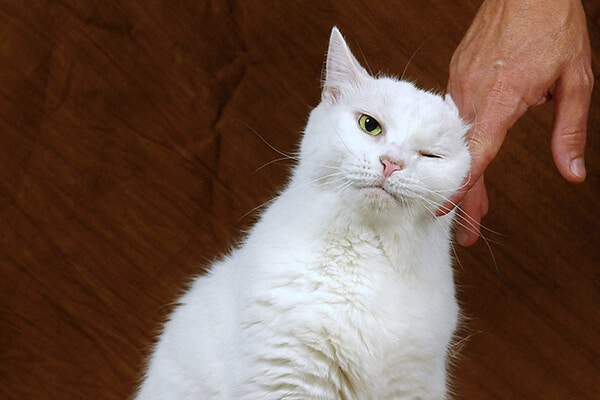- Homepage
- Blog
- Bonding & Care
- How To Stop Cat Scratching Carpet
A guide to stop cats scratching the carpet


Share
Cat scratching is a natural and instinctive behaviour; it’s how they look after their claws, express their emotions and mark their scent. While we want our cats to lead their authentic lives, it can be frustrating when your cat is scratching your expensive carpet.
In this article, we provide answers to the infamous question: ‘why does my cat scratch the carpet?’ We help cat owners navigate how to stop their cat from scratching the carpet by first understanding why they do it. We offer effective methods to stop the behaviour, including preventative measures, deterrents and other ways to stimulate them instead. Whether your cat is scratching the carpet near the door or stairs, at night, or everywhere and all the time, there are things you can do to help. If all else fails, you may need professional help - we also discuss when this might be the case later in the article.
What does it mean when a cat is scratching the carpet?
When a cat is scratching the carpet, they are simply exhibiting their instinctive behaviour in an inappropriate place. Cats scratch as a way to groom their claws, mark their territory and scent, and communicate their emotions. Your cat likely enjoys the texture of the carpet too.
Cat scratching is a form of grooming; it’s a way for them to remove the dead parts of their claws, in order to reveal a sharper layer underneath. Cats need to have sharp claws, especially if they go outside, as it’s part of their defence when hunting or fighting with other animals. Cats may also scratch carpets as a way to stretch their forelimbs and back muscles.
Cats also use scratching as a way to communicate with other cats, since their paws contain sweat glands that release their individual scent. By scratching on a surface, cats can leave behind their scent, as well as a physical mark, that can help to establish their territory against other cats. While this seems unnecessary inside of your home, your cat is likely to satisfy this instinctive behaviour by scratching the carpet.
Besides other cats, cats also try to communicate their mood with their owners. Whether they are purring, wagging their tail or scratching in inappropriate places, it may be your cat trying to tell you how they’re feeling. It’s highly unlikely that your cat is trying to be naughty, it’s more likely that your cat may be scratching the carpet because they’re:
- Looking for attention from their owner
- Feeling happy, excited and/or overwhelmed
- Feeling stressed, nervous and/or anxious
- Lacking stimulation and feeling bored
- Trying to stretch their body
How to stop a cat scratching the carpet?
Cover and protect scratch-prone areas
Since cat scratching is a natural instinct for cats and crucial for their well-being, you won’t be able to stop the behaviour - and shouldn’t try to! But you can stop your cat from scratching the carpet by using preventative measures and providing appropriate alternatives instead. First and foremost, it’s important that you create a safe and comfortable environment at home by caring for your cat properly, which can ward off negative behaviours.
Below are some practical solutions cat owners can try to stop their cat from scratching the carpet:
Try different cat scratchers
If your cat likes to scratch the carpet, it may be that they like to scratch horizontally - hence why the vertical scratching post you bought is collecting dust. Your cat likely also enjoys the texture of the carpet. You can satisfy your cat’s preference by choosing a carpeted scratching pad instead. If not, there are sisal, wooden and cardboard scratchers, and these can be in the shape of a post, pad or wedge, so you can find what your cat likes best. It might also help to anchor the item to the ground or wall or to ensure it’s sturdy enough to not fall whilst your cat uses it. This will offer them the same kind of resistance (and appeal) as your carpet, and hopefully stop your cat scratching the carpet. When your cat uses their scratcher correctly, you can reinforce the positive behaviour by giving them a treat to help your cat understand what they are allowed to do.
Covering scratch-prone areas
You can stop your cat from scratching near the door by covering the area between the doorway with tape or a mat. If there are other carpeted areas your cat likes to scratch, you can try to rearrange some furniture to cover the area instead. Once you know which scratch post suits your cat best, keep several of them around the house. By placing the post in scratch-prone areas, you can stop your cat from scratching the carpet on the stairs or near the door. If your cat is still scratching the carpet at the door at night, make sure they have access to their food, water and litter tray, as they may be scratching for entry.
Creating a stimulating environment
Your cat might be scratching the carpet due to boredom, or because they’re seeking attention from their owners, which is why it’s important for you to dedicate time to play with your cat every day. Cats are also natural hunters and can easily become bored with their food presented in a bowl. Try to offer your cat dry food in a puzzle feeder instead, which will help to stimulate them. Other stimulating toys could be as simple as a laser light or a ping pong ball, which will keep your cat entertained and distracted, and hopefully stop them scratching the carpet.
Deterrent sprays
You may be able to stop your cat from scratching the carpet or the stairs by spraying scratch-prone areas with a cat-safe deterrent spray. You can also use a cat pheromone spray or plug-in device which releases a synthetic version of your cat’s own pheromones. If your cat is scratching the carpet due to stress or anxiety, this spray can help to reassure and relax them, therefore removing the desire to scratch.
Training cat to use scratching post
The easiest way to stop your cat from scratching the carpet is to prevent the behaviour from the beginning. When you bring home a new kitten or cat, you can provide them with a scratching post to satisfy their instincts before they even consider your carpet. You can train your cat by rewarding them with a treat each time they use the scratch post, as a way to reinforce the behaviour.
Making sure your cat feels safe
Other reasons your cat is scratching the carpet could be because they’re feeling nervous, anxious or threatened. If there has been a new arrival in your home of a pet, child or person, this can make your cat feel wary and unsafe. It’s important to introduce any new pets or people to your cat slowly so they have some time to adjust. Make sure each pet has their own food and water station as well as sleeping space, and share your love and affection equally between all pets. If you have multiple cats, provide a scratching post for each cat so they can mark their scent.
When to seek professional help for your cat's scratching behaviour?
In some extreme cases, your cat’s scratching might require professional help. If you’ve implemented the practical solutions above and your cat continues to scratch incessantly, there may be an underlying medical or behavioural issue. You should seek professional help for your cat if they are:
- Excessively scratching
- Scratching walls or furnishings
- Scratching people
- Injuring themselves or others by scratching
- Being more aggressive
If you notice any of these changes in your cat’s behaviour, it’s essential that you take them to the veterinarian. Your vet may be able to refer you directly to a behaviour consultant or cat behaviourist to address the problem. These specialists will help to identify the root cause of your cat’s scratching behaviour and find effective solutions that are specific to each individual cat.
While cats scratching the carpet can be frustrating for their owners, it’s important to remember that it is an innate behaviour in cats. The key is to not stop your cat from scratching altogether, but to offer alternatives for them to satisfy their scratching needs appropriately. By providing a safe, stimulating and loving environment at home, your cat will feel content and is unlikely to engage in negative behaviours. Although cats can be enigmas, they try to communicate their moods to us too. Learn about how cats show affection and reassure yourself that your cat scratching the carpet isn’t because they detest you. Or your carpet (in fact, the opposite).



